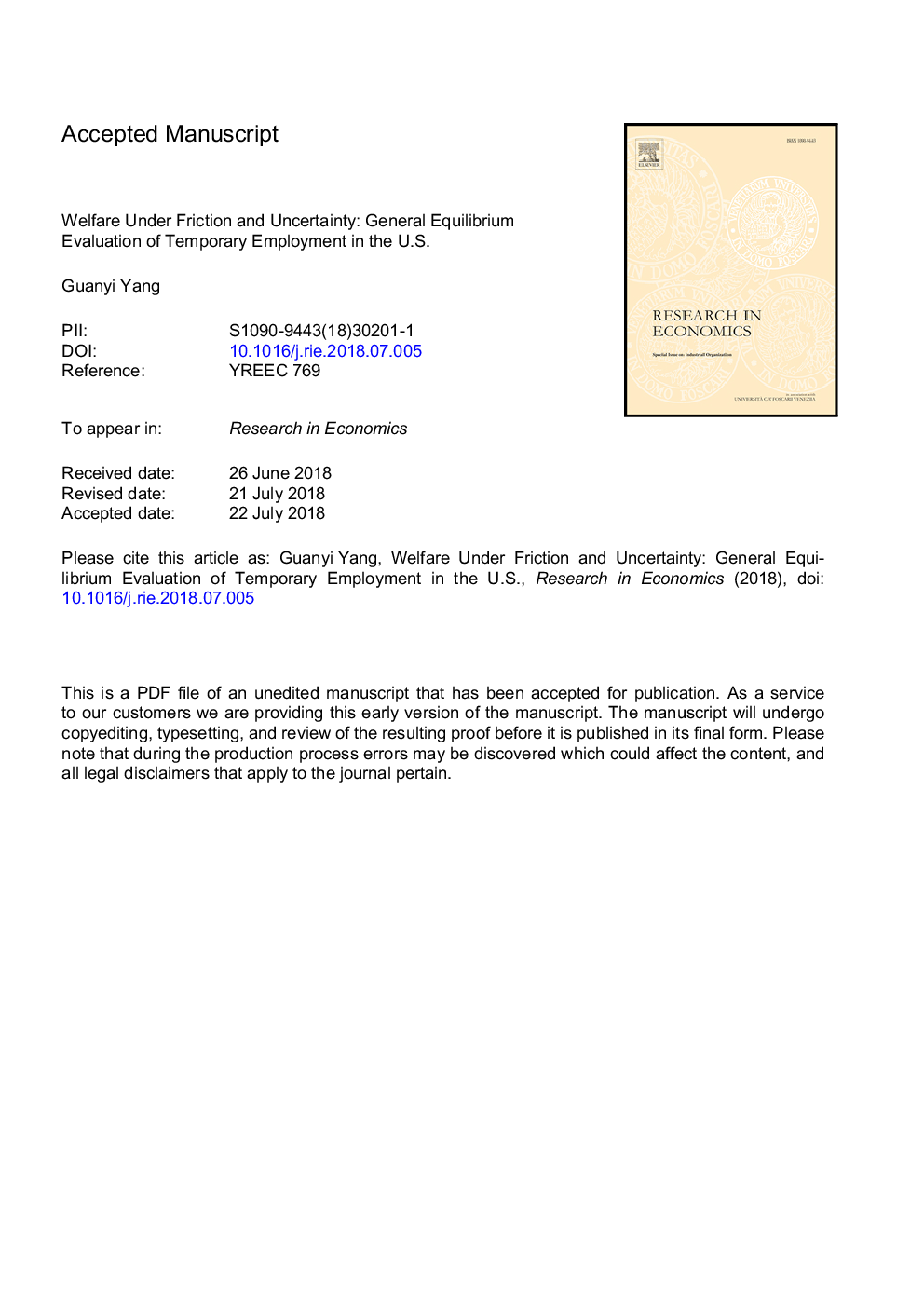| Article ID | Journal | Published Year | Pages | File Type |
|---|---|---|---|---|
| 8960886 | Research in Economics | 2018 | 21 Pages |
Abstract
Temporary contracts usually fall outside of employee protection litigation, thus they are often cheaper than permanent contracts and are offered on-demand by firms. In the last two decades, there has been a sharp growth in such contracts in the U.S. labor market. This paper investigates the welfare consequences of offering temporary contracts in the U.S., an environment with low employee protection litigation and high production risk for firms. Employee protection litigation creates firing rigidity in regular labor markets. Pairing firing rigidity with high production risk, firms reduce employment and output, which generates welfare loss. The inexpensive and flexible nature of temporary contracts offers firms a buffer strategy in making employment decisions under risk and navigating the firing rigidity of the regular labor sector, thereby reducing welfare loss. However, temporary contracts cannot fully compensate for the efficiency cost from rising firing rigidity and risk.
Keywords
Related Topics
Social Sciences and Humanities
Economics, Econometrics and Finance
Economics and Econometrics
Authors
Guanyi Yang,
